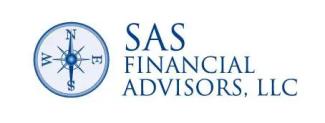A Third Vaccine Option and More Market News
A couple of concerns on our minds this week. First, as my wife and I are poised to receive our 2nd dose of the Moderna vaccine soon. While we wait, we are contemplating how this will impact our behavior. I tend to be more risky than my wife, however it is very apparent to me that recency bias is at work.
Human nature studies have shown that for many, whatever is happening now, the most recent event, feels like it will happen indefinitely. With current shelter in place rules, we have adjusted to be more mindful of all of the current public health rules as a lifestyle. A transition to the reality of having two doses of a vaccine with a 95% efficacy rate will take some adjusting.
Our first reaction to the anticipation of the vaccine was: we will not change our behavior. After the first dose however, we found a new restaurant for our Friday morning routine at which we feel comfortable dining outside. Moreover, we met a close friend for breakfast there. We all ate outdoors at the same restaurant after she received her 2nd vaccine at the Moscone Center. Recency bias, in terms of our most recent events featuring risk-averse and shelter-in-place guideline adherence, confirms that whatever we feel now, we will feel forever. For both JoBeth and I, we confirm this to be our actual experience. For both us, the reality of a transition to any post-vaccine new normal is still too far away to grasp.
It is remarkable that only 1 year after the initial pandemic response in the US, and California specifically, began, we along with so many others will be receiving our 2nd dose of vaccine already. The science behind developing the various strategies of attacking germs is historic. It is similar to the technological and scientific advancement made during wars. Both terrible events but both events accelerating human ingenuity to its extreme in both better and worse ways. Vaccine being better and politicization of masks/social distance/personal hygiene being worse.
Markets
How do we integrate this understanding of human behavior into our personal finances? The markets have some insight into this as outlined in last week's SAS blog entry and newsletter.
- GDP growth and earning expectations are high-historically high.
- Stock prices reflect that expectation even though we as humans think our restrictions and bad news will last forever (recency bias).
The bond market, up until earlier this past month, was responding as though bad times would last for a long time. The Fed agreed and has promised low rates for a couple more years or until we have full employment again, an unemployment rate of 3.5%. In April of 2020, the unemployment rate peaked at 14.8%. In January of 2021 it had reduced to 6.3%.If, in fact we have 2021/2022 growth aligned with expectations, how will the Fed keep interest rates so low?
Inflation? Well, typically inflation increases as employment/wages cause prices to move higher. The Fed has a target for inflation of 2%. A barometer of expected inflation, which is strangely the most important mover of inflation, is the spread between the current yield on ordinary Treasury securities and Treasury Inflation Protected Securities. It is called the 10 year Treasury breakeven rate and an indication of inflation expectation over the next 10 years. Currently 10 year inflation expectations are 2.16%. We have not been close to the 2% goal since before the financial meltdown in 2008. Psychology plays a large role in expectations for inflation which is why herd movement gains momentum and is hard to control after the fact.
Next Round of Stimulus
Early Saturday morning last weekend, the House of Representatives passed the American Rescue Plan, the $1.9 trillion coronavirus relief bill requested by the Biden administration. The vote was 219 to 212, without republican representation on the passing of the bill. The package includes:
- $1,400 stimulus checks to qualifying Americans
- Increased unemployment benefits
- State & local government aid
- $3,000+ child tax credits
- Funds to reopen schools
- Funds for vaccine distribution
- Funds for rental assistance
- Small business relief
A 3rd Vaccine
There is now a third vaccine (Johnson & Johnson) on the block expediting the timeline for access to vaccines for all. This has pushed the availability timeline to as soon as summer 2021. Biggest downside is the attribute to more current event bias. If we’re all vaccinated, it’s evermore challenging to remain vigilant of exposure, gatherings, transmission risk etc. It’s all a work in progress and the good news is, we’re headed in the right direction.

